Absolute numbers may define leg strength, but it can be refined by incorporating a range of movement patterns into your workouts. The strongest lifters don’t just squat and deadlift; they dominate these exercises that challenge stability, mobility, and unilateral strength. These eight exercises aren’t just tests of brute force; they’re the gold standard for building an unshakable foundation. Your lower-body strength is elite if you can perform them with perfect form and heavy loads.
Each of these movements targets different aspects of strength, from explosive power to muscular endurance and joint integrity. Mastering them ensures bigger, stronger legs, better performance, injury resistance, and overall functional fitness. Whether you’re chasing bigger lifts, athletic dominance, or everyday resilience, these exercises belong in your training program. Ready to see where you stand? Let’s dive in.
Back Squat
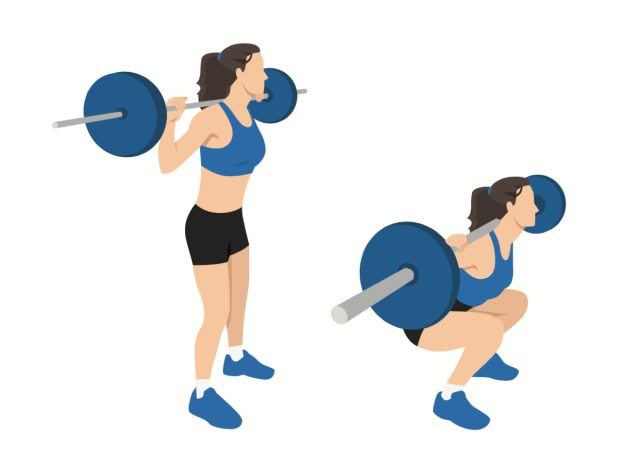
Why: The back squat is the gold standard for lower-body strength. There’s a reason why the back squat is the most sought-after one-rep max test in the gym. It recruits your quads, hamstrings, glutes, and core, maximizing power production and muscle hypertrophy, amplifying your body’s ability to build strength and size.
How to:
- Load the barbell with your desired weight and grip it just outside shoulder width.
- Step under the bar, squeeze your traps, and position it securely across your upper back.
- Unrack the bar and step back, planting your feet hip-width apart with a strong, stable stance.
- Brace your core, bend your knees, and lower into a squat, aiming for at least a 90-degree knee bend.
- Drive through your heels to push back up to a standing position.
- Repeat for the desired reps, then carefully re-rack the bar between sets.
Recommended Sets and Reps: 4 to 5 sets of 5 to 8 reps
Deadlift
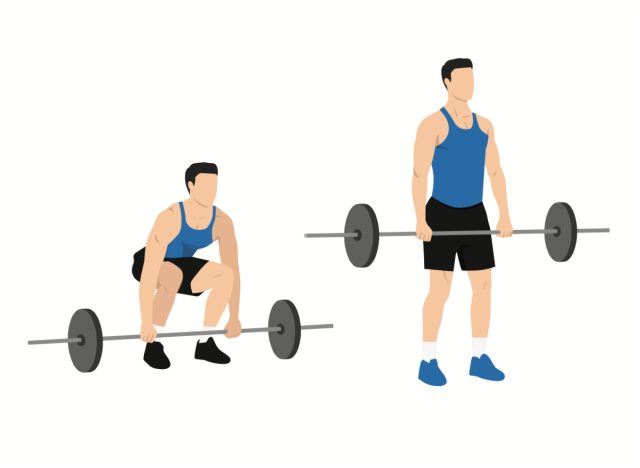
Why: The deadlift develops raw strength and explosive power by targeting the posterior chain (glutes, hamstrings, and spinal erectors.), and are regarded as one of the most “functional” exercises you could perform in the gym.
How to:
- Stand with your feet shoulder-width apart, toes positioned under the bar.
- Hinge at your hips and bend your knees, gripping the bar just outside your legs with an overhand grip.
- Brace your core, lift your chest, and straighten your back to maintain a strong, neutral spine.
- Drive through your heels to lift the bar, extending your legs and thrusting your hips forward while keeping the bar close to your body.
- At the top, stand tall, pause, and lower the bar with control by hinging at your hips and bending your knees.
- Reset and repeat for the desired reps.
Recommended Sets and Reps: 4 to 6 sets of 3 to 5 reps
Front Squat
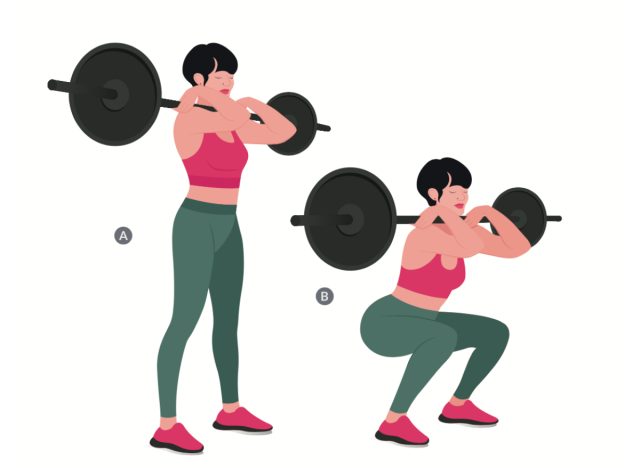
Why: The front squat shifts the load forward, demanding greater quad activation and core stability. Front squats may reduce knee strain compared to back squats while building significant leg strength. You’ll just want to ensure you have the pre-requisite mobility to front rack a barbell. If not, opt for kettlebell or dumbbell options!
How to:
- Hold a barbell across your shoulders with elbows high.
- Stand with feet shoulder-width apart and brace your core.
- Lower into a squat, keeping your chest up and elbows forward.
- Drive through your heels to return to standing.
Recommended Sets and Reps: 4 sets of 4 to 6 reps
Lateral Lunge
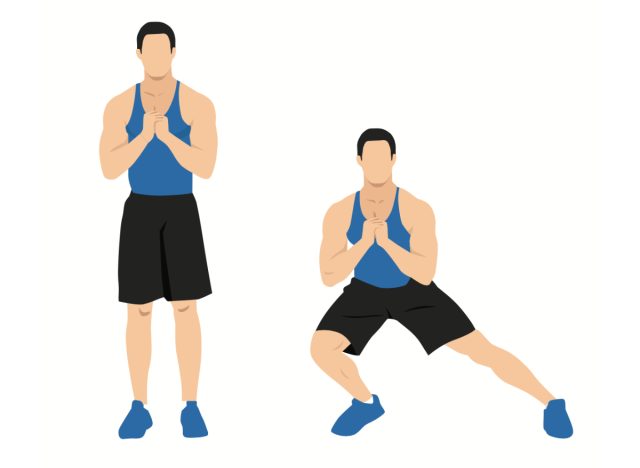
Why: Lateral lunges develop strength in multiple planes of motion, improving balance and athleticism. This movement strengthens the adductors, glutes, and quads while enhancing mobility.
How to:
- Stand tall with your feet together.
- Step laterally, lowering into a lunge while keeping the opposite leg straight.
- Push through your bent leg to return to standing.
- Repeat on the other side.
Recommended Sets and Reps: 3 sets of 8 to 12 reps per leg.
Good Morning
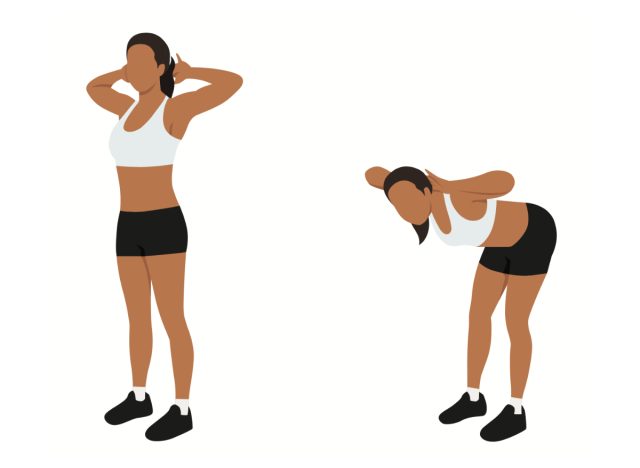
Why: The good morning strengthens the posterior chain and reinforces proper hip hinge mechanics, much like its posterior cousin, the RDL (Romanian Deadlift). Good Mornings help solidify your deadlift and squat performance by increasing hamstring and lower back endurance. Banded good mornings are a strong starting option if you don’t feel comfortable with the barbell.
How to:
- Stand with your feet shoulder-width apart, knees slightly bent, and a barbell resting across your upper back.
- Hinge at your hips, pushing them back as you lower your torso toward the floor, keeping your core engaged.
- Lower until your chest is nearly parallel to the ground while maintaining a neutral spine.
- Drive your hips forward to return to the starting position, squeezing your glutes at the top.
- Repeat for the desired sets and reps.
Recommended Sets and Reps: 3 sets of 5 to 8 reps.
Bulgarian Split Squat
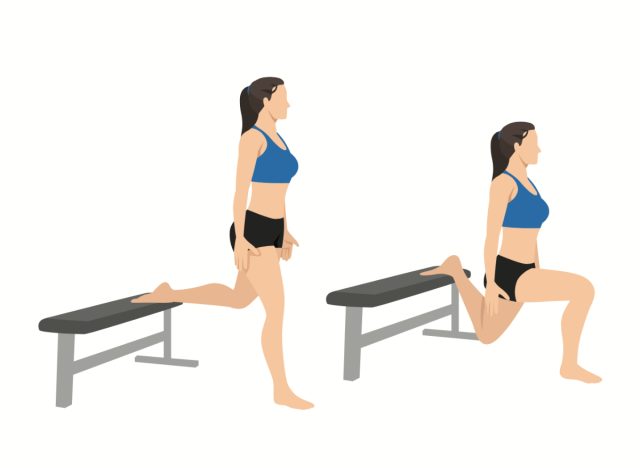
Why: This unilateral leg move builds stability, balance, and single-leg strength. Bulgarian split squats generate high muscle activation in the quads and glutes while reducing spinal loading. If you’ve never tried these, be ready; you’ll feel them the next day.
How to:
- Place your left foot on an elevated surface behind you, ensuring your rear knee is aligned under your hip.
- Position your right foot forward in a lunge stance, keeping your front shin vertical.
- Lower your back knee toward the ground in a controlled motion.
- Drive through your front heel to push yourself to the starting position.
- Repeat for the desired reps.
Recommended Sets and Reps: 3 to 4 sets of 6 to 10 reps per leg
Romanian Deadlift
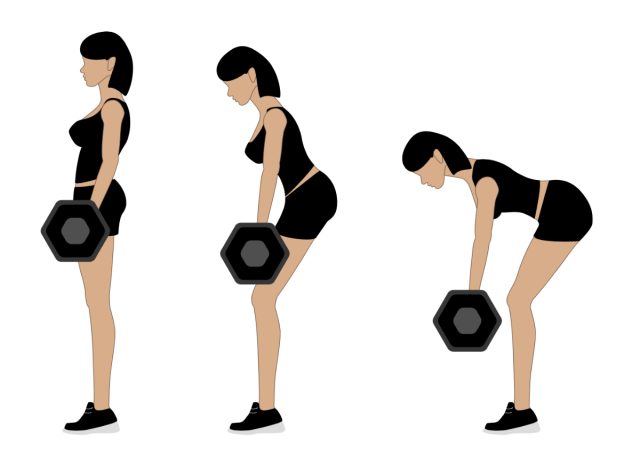
Why: The Romanian deadlift is excellent for building hamstring and glute strength while reinforcing hip hinge mechanics and mobility. Starting with dumbbells allows you to master control and technique before progressing to the barbell for heavier loads.
How to:
- Grip the barbell with an overhand, shoulder-width grip. Stand with your feet hip-width apart, firmly planted on the floor.
- Lift the bar to a standing position, keeping your core braced and shoulders pulled back.
- Hinge at the hips, allowing a slight bend in your knees as you push your hips back, keeping the bar close to your legs.
- Lower the bar slowly until you feel a deep stretch in your hamstrings while maintaining a neutral spine.
- Drive through your heels and thrust your hips forward to stand tall, avoiding excessive arching in your lower back.
- Repeat for the desired reps.
Recommended Sets and Reps: 3 to 4 sets of 6 to 8 reps
Leg Press
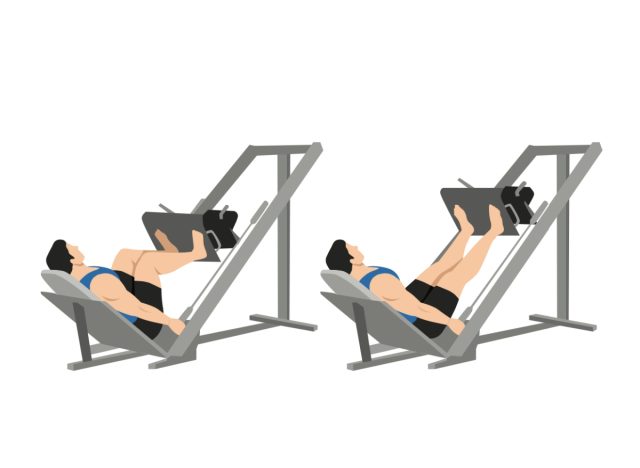
Why: The leg press allows for high-intensity leg training with reduced spinal stress. It effectively targets the quads, hamstrings, and glutes, making it a staple for building strength and size. To create a more targeted training approach, experiment with varying foot positions.
How to:
- Sit on the leg press machine with your back firmly against the pad and your feet shoulder-width apart on the platform.
- Disengage the safety catch and extend your legs, slightly bending your knees to avoid locking out.
- Lower the platform under control until your knees reach a 90-degree angle.
- Drive through your heels to press the weight back up to the starting position.
- Repeat for the desired reps.
Recommended Sets and Reps: 4 sets of 8 to 12 reps
Mastering these eight movements is a solid indicator of elite lower-body strength, but true progress comes from consistent training, smart programming, and attention to detail. Here’s how to take your leg strength to the next level:
- Prioritize Progressive Overload
To build strength, you must challenge your muscles by gradually increasing weight, reps, or intensity over time. Track your lifts and aim for minor weekly improvements while maintaining proper form.
- Train Across Multiple Rep Ranges
A mix of low-rep (3-5) heavy sets for maximal strength and higher-rep (8-12) moderate-weight sets for hypertrophy will create well-rounded lower-body development. Don’t neglect endurance-based sets (12-15 reps) to build muscular resilience.
- Balance Bilateral and Unilateral Work
Squats and deadlifts are essential, but single-leg exercises like Bulgarian split squats and lateral lunges enhance balance, fix imbalances, and improve functional strength.
- Strengthen Your Posterior Chain
Strong hamstrings, glutes, and lower back muscles are crucial for power, stability, and injury prevention. Incorporate exercises like Romanian deadlifts, good mornings, and hip thrusts to reinforce your posterior chain.
- Improve Mobility and Stability
Tight hips, weak ankles, or poor core stability can limit your strength potential. Spend time on mobility drills, stretching, and core training to enhance movement quality and prevent injuries.
- Prioritize Recovery
Muscles grow and strengthen outside of the gym, not just in it. Ensure you get enough sleep, proper nutrition (especially protein and carbs for recovery), and rest days to avoid overtraining.
- Train Explosively
Incorporate plyometric exercises like box jumps, broad jumps, or kettlebell swings to improve the rate of force development (how fast you can become powerful), making your lifts more powerful and efficient.
- Maintain Consistency
Elite leg strength isn’t built overnight—it results from disciplined, long-term training. Stick to a structured program, train with intent, and trust the process.










